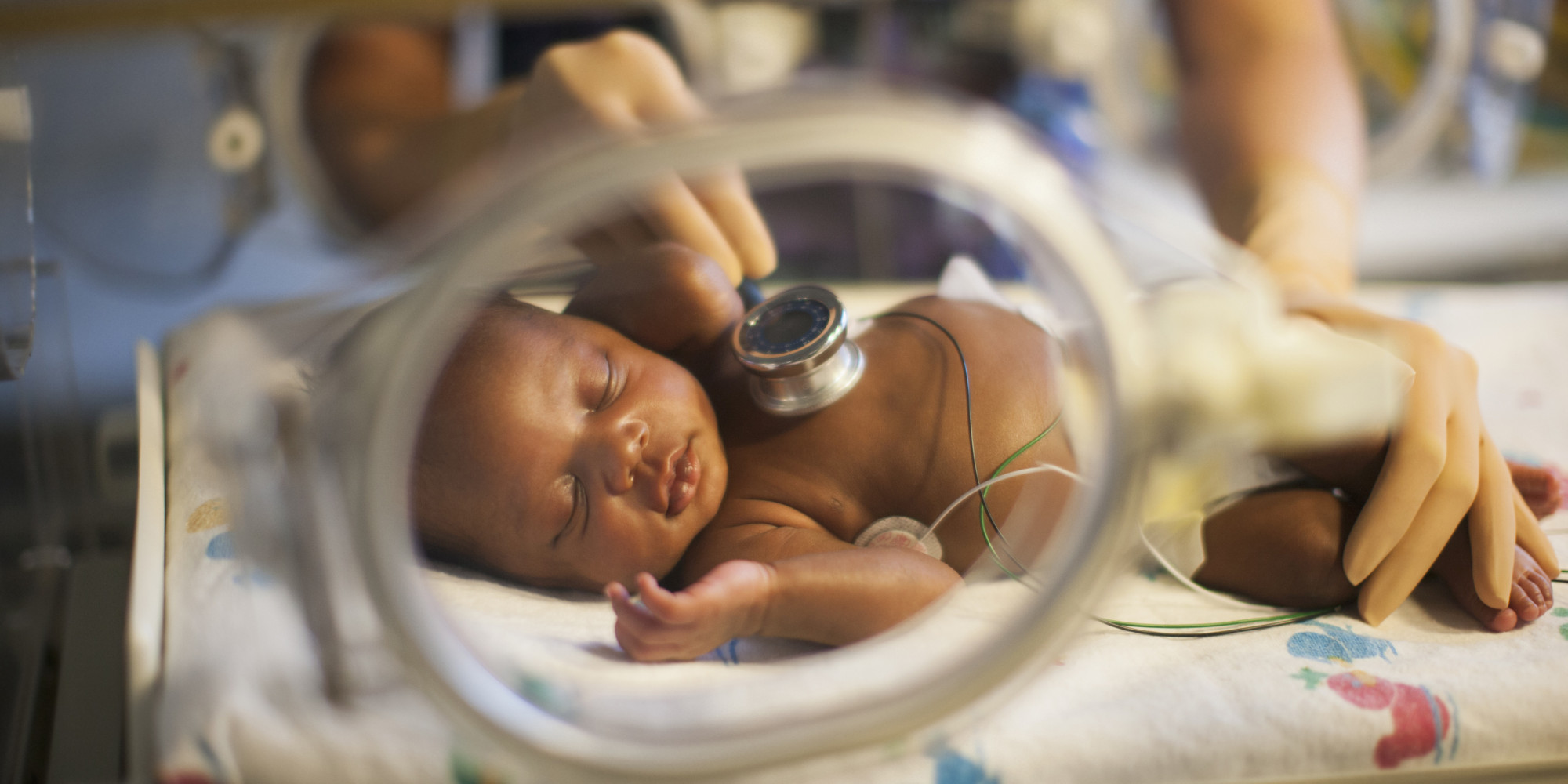Mother Gina Schroeder, who delivered at 31 weeks, did not know she was at risk for having a premature baby. “It happens so fast,” said Schroeder, “you’re getting the knowledge as it’s happening to you, which is scary.”
Premature birth, or “preterm” birth, is any birth that occurs before the first 37 weeks of pregnancy. [2] According to March of Dimes, there are approximately 380,000 premature births each year. [1] That means one out of 10 babies in the U.S. is born premature.
Despite being relatively common, many women believe that having a premature baby will never happen to them. But the reality is that it can happen to anyone —even the healthiest woman. In fact, research shows that 40 percent of premature babies are born to first time moms [3], and that 50 percent of premature births occur when there were no known risk factors [4]. However, a variety of factors can influence a woman’s chance of delivering preterm such as stress, high or low maternal age, high blood pressure, or late prenatal care. These factors can make it difficult to predict preterm labor. [6]
“At 31 weeks, my blood pressure spiked and my legs swelled. The next thing I knew everyone was rushing around trying to get me prepped for an emergency C-section. They said they had to get her out NOW because I had developed preeclampsia and HELLP (Hemolysis Elevated Liver enzymes) syndrome, both of which are life threatening to my baby and me,” said Schroeder.
When a preterm baby is born, the baby is assessed for health issues and subsequent intensive care begins. The earlier a baby is born, the higher the risk for disability or death. Babies born at or before 32 weeks are less likely to survive. [5] More infants die from premature birth than any other related cause.
For babies who survive, intensive care is required immediately because many vital organs, including the brain, lungs, and liver, develop during the final weeks of pregnancy. [5] Preterm babies’ bodies typically haven’t developed enough to properly function on their own.
“Each week of gestation up to 39 weeks is important for a fetus to fully develop before delivery and have a healthy start,” said Jeffrey L. Ecker, MD, chair of the American College of Obstetrics & Gynecology’s Committee on Obstetric Practice.
Premature babies lack a complete gestation process and face long-term health issues as a result. Many suffer from neurological disabilities like cerebral palsy, breathing problems like asthma, developmental delays, impaired cognitive skills, vision problems, hearing impairment and trouble feeding. [5]
“Haley was a rock star in the NICU (Neonatal Intensive Care Unit). She was breathing on her own, keeping good stats. She just needed to feed on her own. She spent a total of 16 days in the NICU and then I was able to bring her home. Bringing home a baby that was just 4lbs was terrifying. During my hospital stay, the doctors tried to prepare us for the lifelong problems that she could have,” said Schroeder.
Now there is a new proteomic blood test available. Given in the second trimester, it can assess each woman’s individual risk for premature birth. This prenatal test measures proteins secreted from the placenta into the mother’s blood that are highly predictive of a woman’s individual risk of having a premature birth. It’s important to stay vigilant in the early stages of pregnancy.
“As a Mom, you will do everything, anything you can to help your child. When you know you are at risk for having a premature baby, you’ll do anything to keep them out of the hospital. I didn’t get that chance. I hope that other women will get that chance,” said Schroeder.
The Society for Women’s Health Research encourages all women, pregnant or considering pregnancy, to learn as much as they can to ensure a healthy term. For more information visit our website. If you are pregnant and have concerns or questions, contact your health care provider and learn more about your risk factors, what to look for in premature labor, and if the proteomic blood test is right for you.
References:
1. http://www.marchofdimes.org/complications/premature-babies.aspx
2. Behrman R, Butler A. Preterm Birth: Causes, Consequences and prevention. Institute of Medicine: Committee on Understanding Premature Birth and Assuring Health Outcomes. The National Academies; Press: 2007
3. Martin JA, Hamilton B, et al. Births: Final Data for 2013. National Vital Statistics Report. Center for Disease Control and Prevention. 2015; 64:1
4. Iams, J. Prevention of Preterm Parturition. N Engl J Med 2014; 370;265-61.
5. http://www.cdc.gov/reproductivehealth/maternalinfanthealth/pretermbirth.htm
6. http://www.cdc.gov/reproductivehealth/MaternalInfantHealth/PDF/PretermBirth-Infographic.pdf
